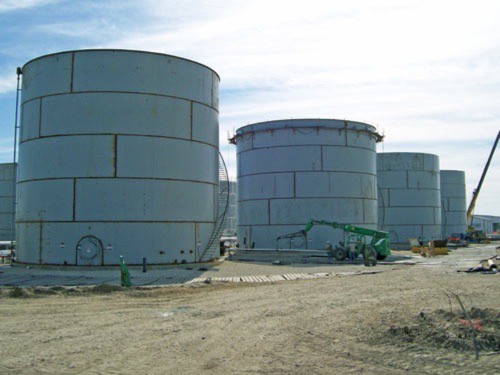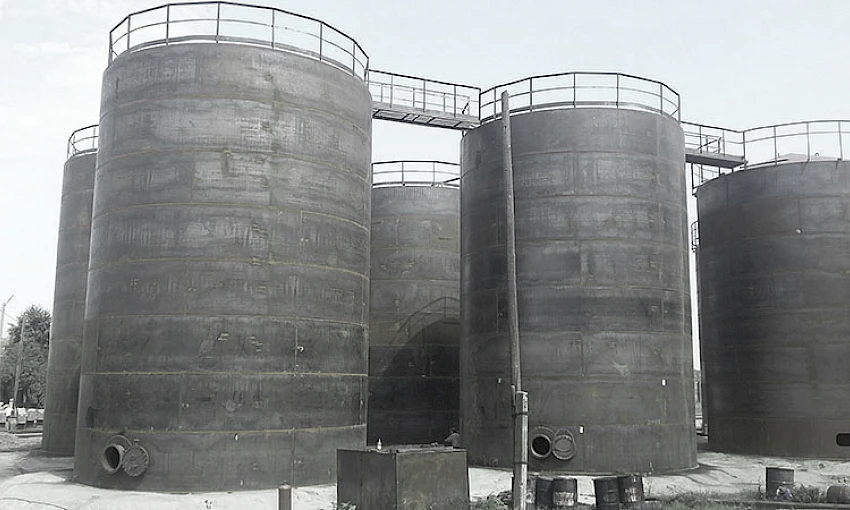Examining API 650 Welding Inspection and Its Role in Structural Integrity
A Detailed Look at the Installation Refine of Welding Evaluation Techniques
Welding assessment is a critical process that ensures architectural honesty and security. The installment of examination methods includes numerous systematic steps, each indispensable to attaining reputable outcomes. From preparation and tool option to conducting aesthetic and non-destructive examinations, each phase demands mindful interest. Understanding these treatments can substantially enhance high quality assurance in welding tasks. What difficulties develop in carrying out these methods, and exactly how can they be efficiently attended to?
Understanding the Importance of Welding Evaluation
Welding inspection is a vital element of making certain architectural integrity and safety in construction and production processes. This method involves assessing bonded joints for defects, making sure that they fulfill particular requirements and laws. By methodically assessing weld high quality, assessors can recognize problems such as splits, spaces, and insufficient combination, which can endanger the strength and resilience of frameworks.
The significance of welding examination extends past immediate security worries; it aids stop pricey failures and prospective hazards in the long-term. Efficient inspection strategies foster conformity with industry criteria, consequently improving the overall reliability of bonded parts. Furthermore, a durable examination procedure adds to maintaining the online reputation of manufacturers and builders, as it ensures clients of the high quality of their jobs. Ultimately, comprehending the importance of welding assessment is critical for promoting risk-free building practices and guaranteeing the longevity of necessary framework and products.
Choosing the Right Devices for Evaluation
When selecting the suitable devices for evaluation, it is important to ponder the particular demands of the welding procedure and the materials involved. Various evaluation methods, such as aesthetic, ultrasonic, and radiographic screening, necessitate unique devices customized to their unique needs. For visual evaluations, tools like amplifying calipers and glasses are important for reviewing weld top quality. Ultrasonic testing requires specialized tools with the ability of sending and obtaining acoustic waves to discover interior problems. Radiographic screening, on the various other hand, makes use of X-ray or gamma-ray resources along with sensitive movie or digital detectors to expose incongruities.
Furthermore, personal safety tools (PPE) is important to ensure the security of examiners during assessments. Selecting the right tools not only improves the accuracy of inspections however also contributes to the overall integrity and safety and security of the welding task. A detailed understanding of readily available devices and their applications is crucial for efficient welding inspection.
Planning for the Examination Process
Before starting the evaluation process, it is important to develop a thorough plan that describes the extent and goals of the assessment. This strategy must include details requirements that define what makes up acceptable high quality in the welding work being evaluated. Determining the pertinent codes and requirements is vital, as they will certainly guide the examination requirements and techniques.
Furthermore, employees associated with the inspection has to be effectively trained and accredited in welding inspection methods to assure reliability and precision. A checklist can be useful in arranging the various facets of the inspection, ranging from tools readiness to environmental problems that can affect the evaluation.
Logistical considerations such as scheduling, offered resources, and communication between team members should be addressed. By preparing systematically, inspectors can enhance the effectiveness of the evaluation and ensure that all crucial elements are duly considered before waging the examination itself.
Performing Aesthetic Assessments

Carrying out visual examinations is a necessary action in the welding examination process, calling for cautious prep work to assure reliable evaluation. Examiners must be familiar with vital defect signs that can signal possible issues in weld top quality. By concentrating on these elements, one can boost the general integrity of the evaluation end results.
Preparing for Visual Examination
Visual assessment functions as a vital initial step in the welding assessment procedure, ensuring that any kind of potential problems are recognized early (API 650 Welding Inspection). Proper preparation is necessary for effective visual assessment. Assessors should begin by examining pertinent documents, including welding treatments and specs, to comprehend the task requirements. They should gather needed devices, such as multiplying glasses, flashlights, and appropriate personal protective equipment (PPE) An extensive exam of the inspection area is essential; examiners ought to verify it is free and clean of blockages. In addition, it is very important to establish perfect lighting conditions to enhance visibility of welds. By taking these primary actions, assessors can develop an atmosphere favorable to determining inconsistencies and guaranteeing the stability of the welded structures
Trick Issue Indicators
A detailed understanding of crucial issue signs is necessary during visual inspections to assure the top quality and security of welded joints. Inspectors need to concentrate on certain indicators such as cracks, porosity, damages, and incomplete fusion. Splits might appear as sharp lines and can endanger architectural stability. Porosity manifests as tiny holes that can weaken weld toughness. Undercuts, which are grooves along the weld edge, can lead to stress concentration. Incomplete blend suggests that the weld steel did not appropriately bond special info with the base material, causing a weak joint. By systematically identifying these defects, assessors can determine compliance with market standards and boost you could try these out the overall integrity of welded frameworks, ultimately adding to much safer operational problems.
Implementing Non-Destructive Checking Techniques

Countless non-destructive testing (NDT) strategies are essential to assuring the integrity of welded frameworks without compromising their performance. These approaches allow examiners to review weld quality and find defects without triggering damage to the products being evaluated. Typical NDT strategies consist of ultrasonic testing, radiographic testing, magnetic bit screening, and dye penetrant testing. Each technique offers a specific function, attending to various types of defects such as fractures, porosity, or insufficient blend.
Applying NDT techniques requires a methodical technique, starting with picking the appropriate method based on the materials and the nature of the weld. Training workers in these methods is crucial for exact outcomes. Additionally, establishing clear treatments and standards guarantees consistency throughout the inspection process. By integrating NDT into the welding inspection workflow, organizations can enhance the reliability of their items while decreasing possible threats connected with architectural failings. This positive method eventually adds to maintaining safety and security and top quality criteria in bonded buildings.
Documenting and Analyzing Examination Outcomes
Effective documents and evaluation of assessment results are important components of the welding examination procedure. Precise records of examination searchings for act as a reference for top quality guarantee and compliance with sector requirements. API 650 Welding Inspection. Inspectors need to use structured kinds or electronic platforms to log details such as the sort of weld, evaluation methods utilized, and any inconsistencies recognized during the analysis
When data is accumulated, detailed evaluation is vital. This entails comparing outcomes against developed requirements to determine patterns or reoccuring problems. Statistical tools might be utilized to measure issues and analyze their effect on overall weld high quality.
Reliable communication of findings to pertinent stakeholders is important. Recaps and records must be clear and succinct, highlighting crucial understandings and recommendations for restorative activities. By methodically examining and recording assessment outcomes, companies can cultivate continuous improvement in welding methods and improve item honesty.
Frequently Asked Questions
What Certifications Are Needed to End Up Being a Welding Examiner?
To come to be a welding assessor, one typically needs appropriate qualifications such as AWS CWI, in addition to experience in welding practices, understanding of welding codes, and proficiency in evaluation methods to ensure top quality and safety requirements.
Exactly How Usually Should Welding Inspections Be Performed?
Welding inspections should be Recommended Reading conducted routinely, generally after each weld is completed, and occasionally during jobs. Elements such as project complexity, market requirements, and regulative demands can influence the frequency of these examinations.
What Is the Expense of Welding Inspection Services?
The price of welding inspection services varies considerably based on factors such as project complexity, place, and size. Generally, rates vary from $100 to $150 per hour, with extra fees for specialized screening and accreditations.
Are There Certifications for Welding Inspectors?
Yes, there are numerous qualifications for welding inspectors, consisting of those provided by the American Welding Culture (AWS) and the International Institute of Welding (IIW) These accreditations guarantee assessors possess the essential skills and expertise for efficient evaluations.

Just how Do I Select an Examination Company?
To choose an assessment company, one ought to examine credentials, experience, industry track record, and consumer testimonials. Additionally, comparing service offerings and rates can aid guarantee the selected company fulfills details project needs efficiently.
Furthermore, workers entailed in the examination must be properly trained and accredited in welding evaluation techniques to guarantee dependability and precision. Conducting visual assessments is a crucial action in the welding inspection process, requiring careful prep work to assure reliable analysis. Aesthetic assessment offers as an important very first step in the welding evaluation process, guaranteeing that any possible issues are recognized early. Efficient paperwork and analysis of inspection outcomes are crucial parts of the welding assessment process. Welding inspections should be performed on a regular basis, normally after each weld is completed, and periodically throughout jobs.